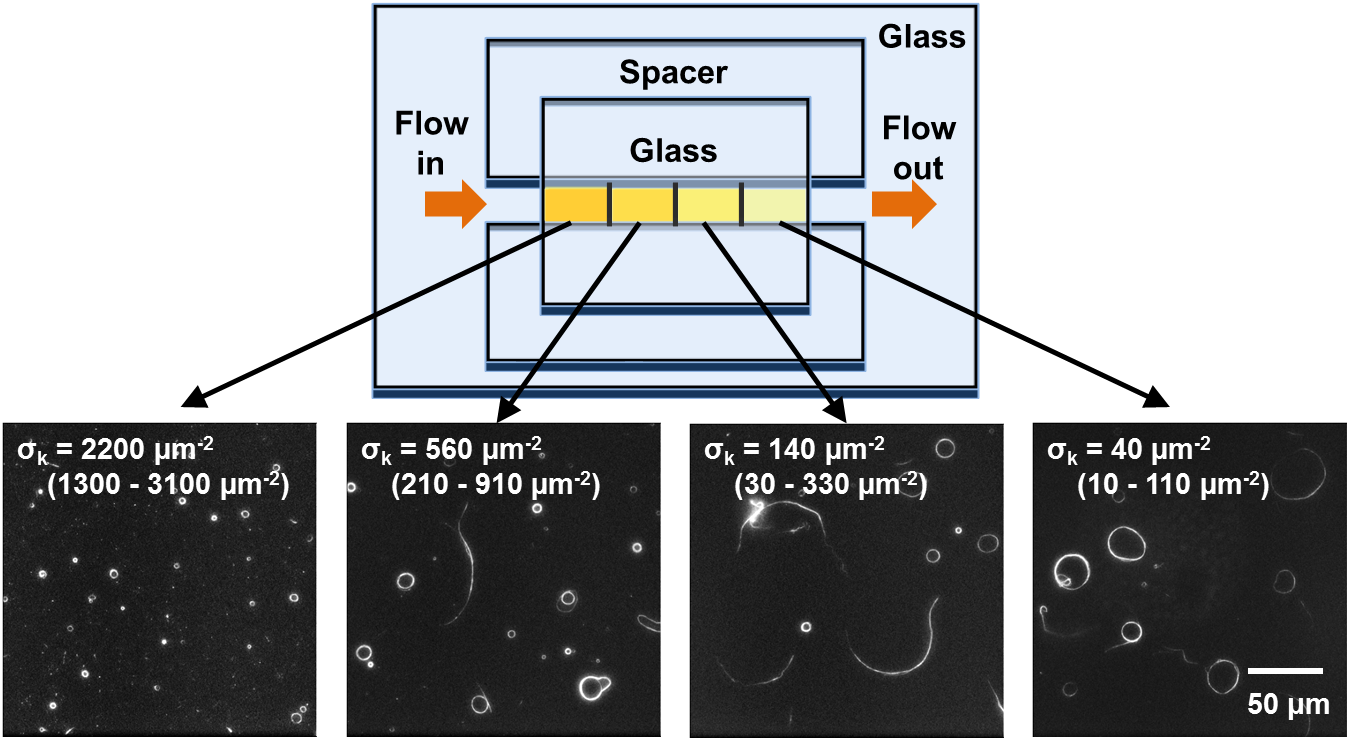Determining the mechanism of microtubule spool initiation

As kinesin density increases, spooling density increases and spool circumference decreases.
Cross-linked microtubules propelled by surface-adhered kinesin motors can form spools or ring-like structures. These structures are interesting because they are under considerable strain. With a persistence length on the order of millimeters, a microtubule ring can only be created and maintained with the assistance of kinesin motors to supply the force necessary to deform the microtubule.
There were three hypothesized methods for spool formation. The first was that spools were formed due stress relaxation resulting from microtubule bundle complexes arising from the structural supertwist of the microtubules. If this were the case, the spool density and circumferences would be independent of kinesin density on the surface. The second hypothesis was that spools originated from the cross-linking of multiple microtubules which simultaneously ran into each other and formed a closed structure. This mechanism would only depend on the density of microtubules on the surface and not the kinesin density. Finally, the third mechanism posited that spooling occurred as a result of a defective site which pinned part of the microtubule in place. As the non-defective kinesin on the surface would continue to propel the rest of the microtubule forward, the microtubule would curve in on itself and cross-link into a ring-structure.

Out of the three proposed mechanisms of spooling, only the third is dependent on kinesin concentration.
In my experiments, I created a simple stepwise gradient of kinesin motors on the surface by flowing in the kinesin solution section by section, allowing the kinesin solution to adsorb for various lengths of time. Thus, in a single flow cell, it was possible test the effects of multiple kinesin concentrations and control for all other factors. With higher kinesin densities, there was an increase in spool density and a decrease in spool circumference, showing that pinning was a major mechanism of spool initiation. We also found that the adsorption rate of kinesin was approximately 25% per minute as opposed to the 50% per minute which had been calculated before. This was also the first time that gradual flow was used to create a kinesin gradient surface within a flow cell.
For further reading, see A. Lam, C. Curschellas, D. Krovvidi, and H. Hess, Soft Matter (2014).